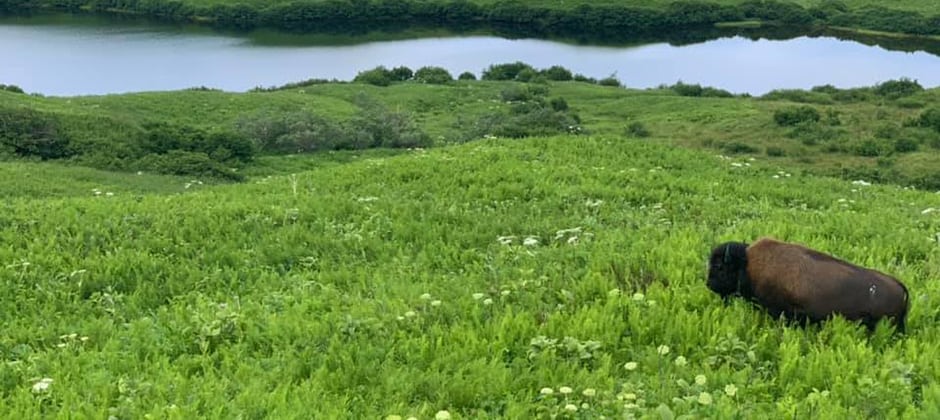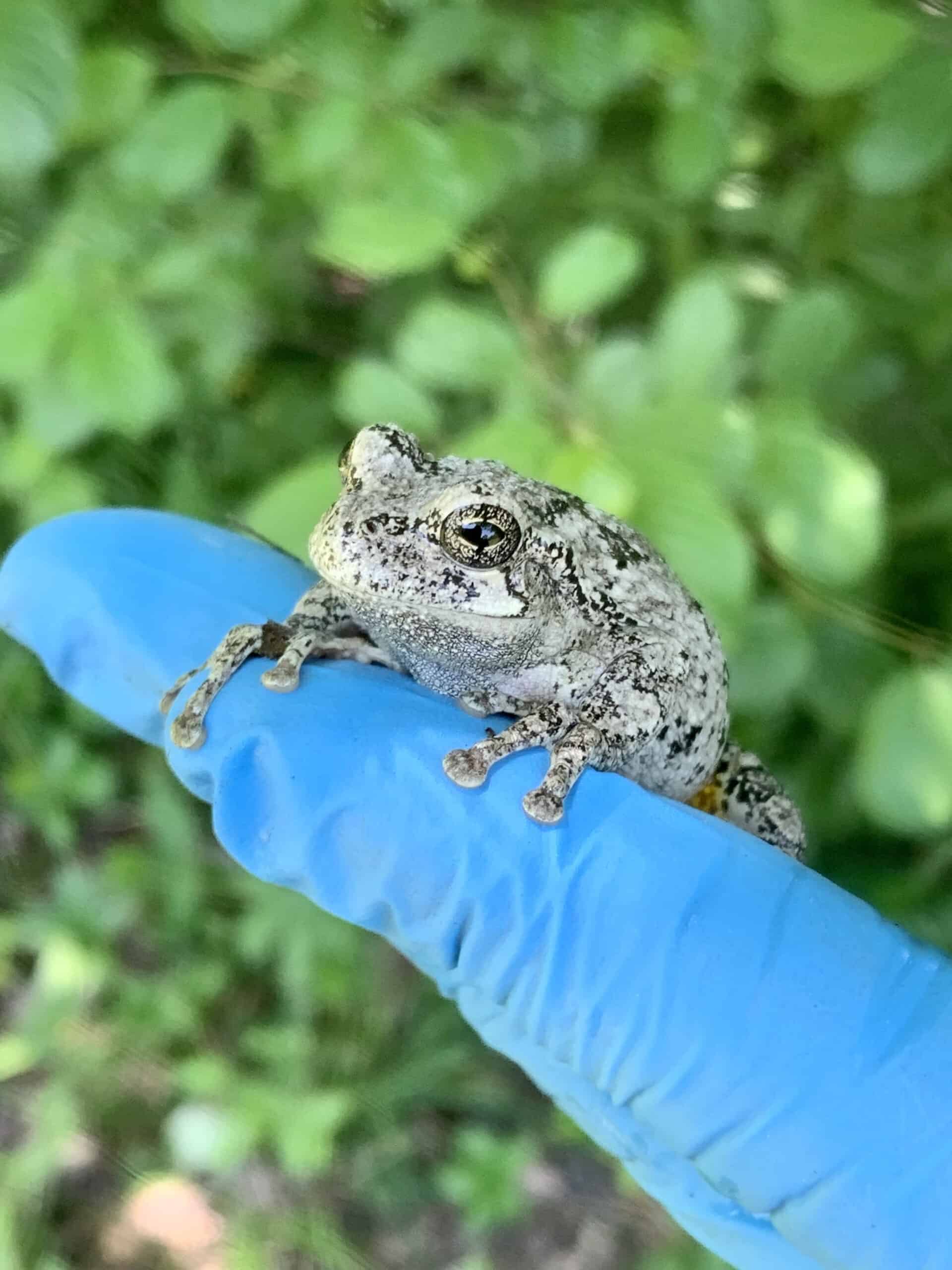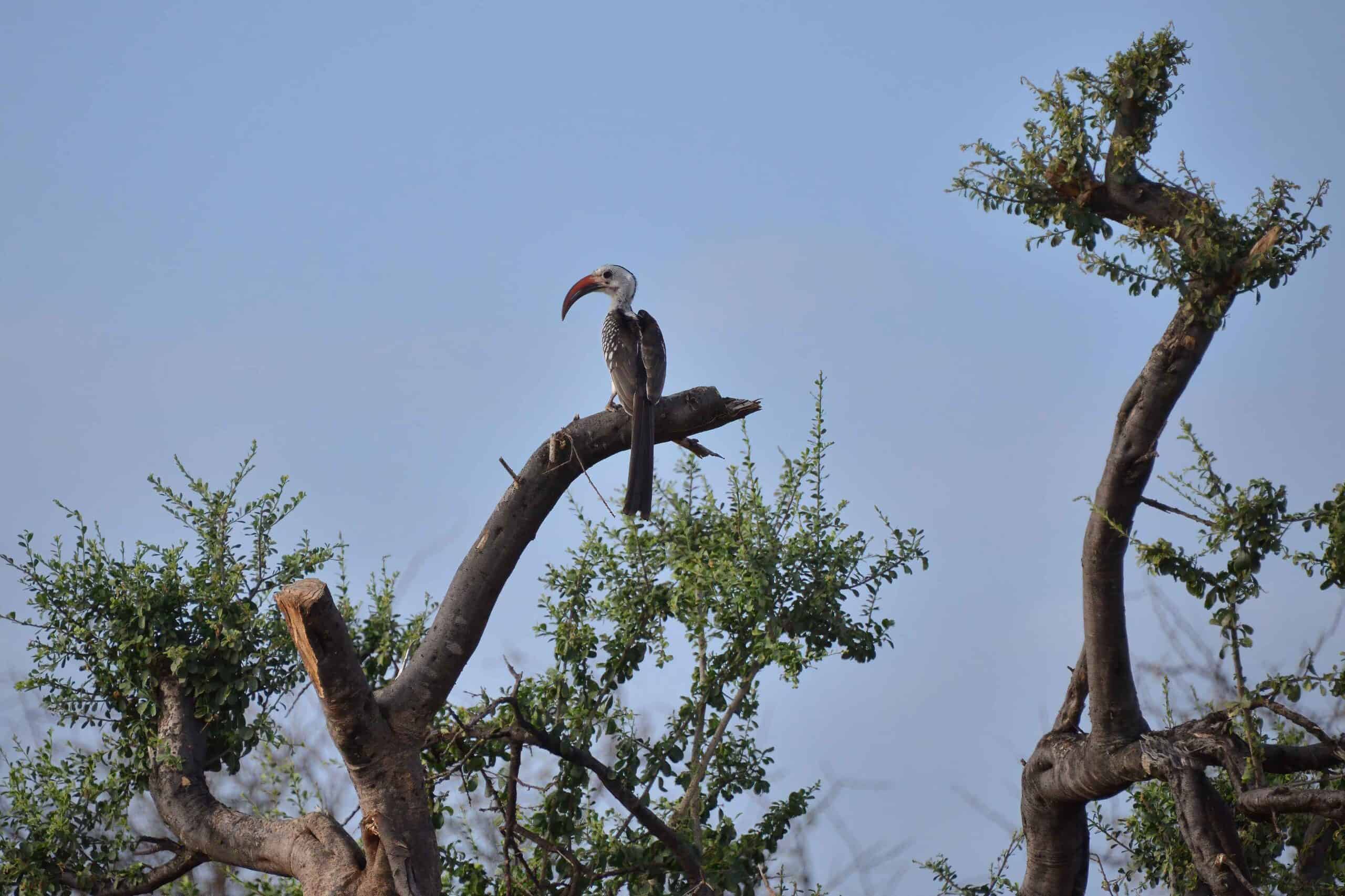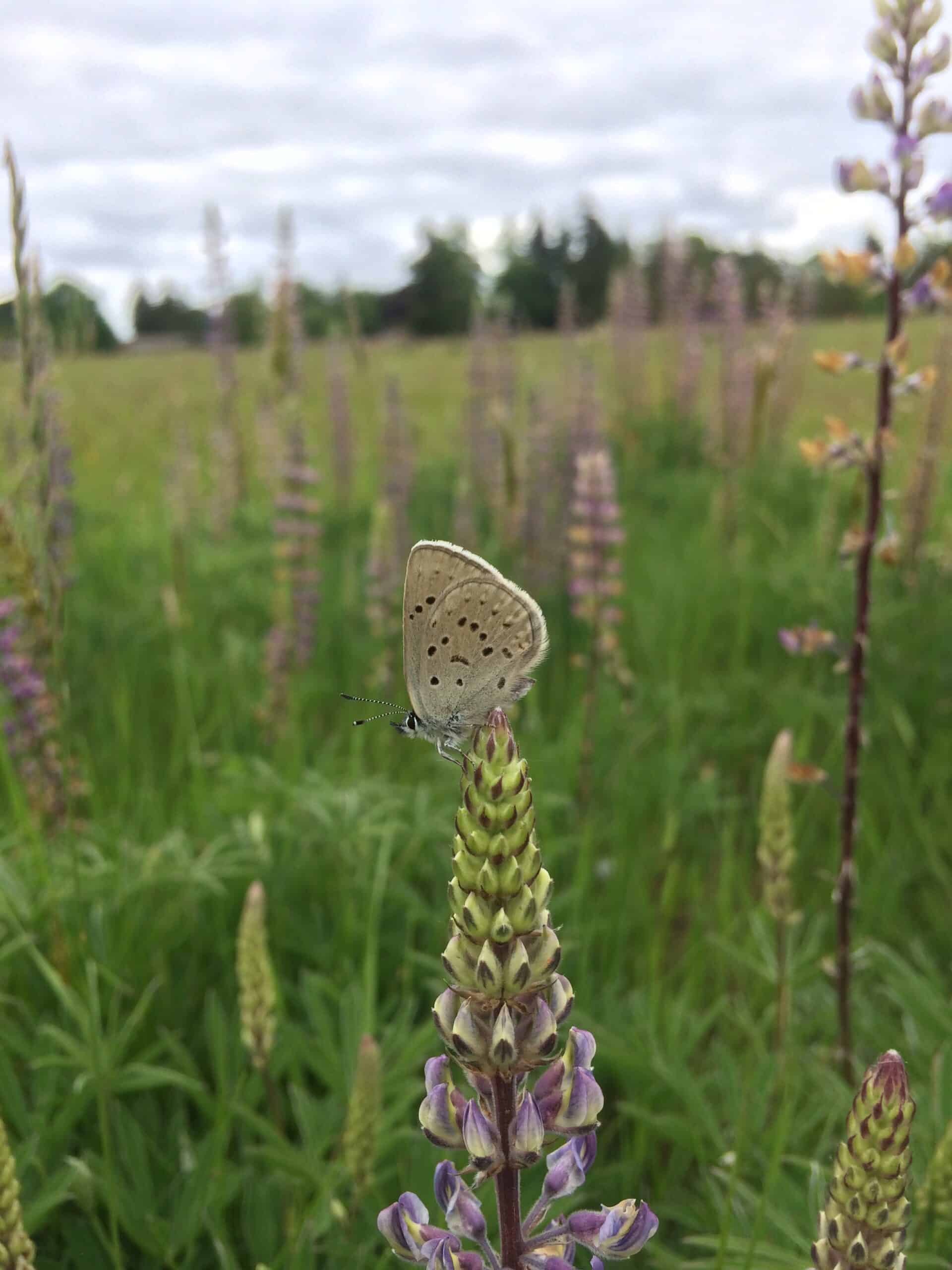Share this article
Bison herd grows on Sitkalidak Island
As the Sitkalidak Island bison herd continues to grow in the western Gulf of Alaska, wildlife biologists and community members are setting out to learn more about the herd in the hopes that it will soon provide a sustainable food resource for the tribe on the island.
Sitkalidak Island, a small island next to the much larger Kodiak Island, is home to the Alutiq tribe. Members of the tribe, which have lived there for about 8,000 years, historically have eaten the fish, seals and sea lions surrounding them.
But in 2015, the tribe began looking into purchasing a bison herd from a family on Kodiak Island, even though the species isn’t native to Sitkalidak Island. “Historically, the herd originated here in Kodiak Island, and folks in our community harvested from it,” said Melissa Berns, an Alutiq member and herd manager for the Sitkalidak Island bison. “The then-owner really saw the value in the resource and food security for our community.”
When the owner died, the Alutiq became members of the already-formed Intertribal Buffalo Council, purchased the bison and relocated 25 of them to Sitkalidak Island.
Initial research showed them what areas would be best for the bison to thrive and what size of a population the area could sustain. But they wanted to continue learning about the herd. Berns’s father would periodically volunteer to fly over the area and report bulls and cows that he saw. “It was a little labor intensive, and also costly,” she said. “We decided, let’s make this a little bit easier.”
In July 2020, they collared 10 bison—from younger cows to older bulls—with GPS and VHF monitors to understand their movements.
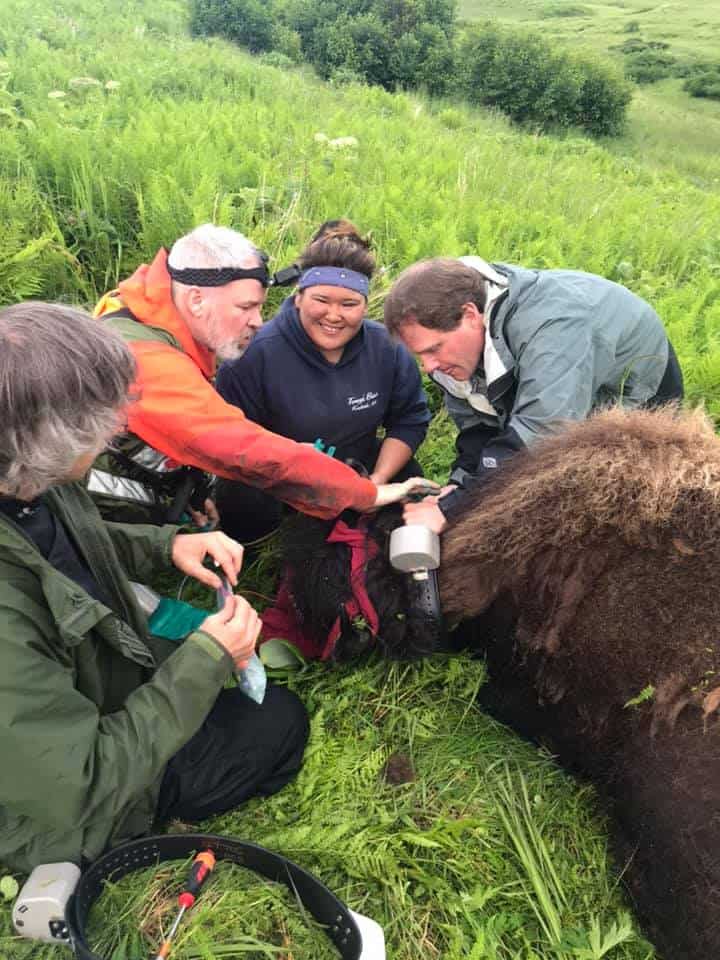
Wildlife biologists and community members collared bison in Sitkalidak Island
Credit: Sitkalidak Bison Herd via Facebook
Some of their initial findings were surprising. Some bison managed to swim back to Kodiak Island, Berns said, likely chased by bears “We had to round them up and move them back over,” she said. Now, the GPS collars help them monitor them and stop them from escaping the island.
Berns and her colleagues have also found favored routes for the bison and plan to put out some exclosure zones to look at how the bison may be impacting the landscape over longer periods of time. “We also want to make sure there isn’t overgrazing, and they’re not growing too much that they are pushing native species off the island,” she said.
Recently, they added more bison to the herd. After collecting biological data and sending out hair samples, they received a good history of their DNA. In order to help their herd become more genetically diverse, they applied to receive bulls from Yellowstone. “We were awarded those bulls and trucked them and then flew them from Montana to Sitkalidak Island,” she said. “They’re doing really well, and they’re well integrated into the herd.” She hopes to do another study soon to determine how much genetic diversity they are bringing into the herd.

Bison like this one were sent from Montana to Yellowstone to help grow the genetic diversity of the Sitkalidak Island herd. Credit: Sitkalidak Bison Herd via Facebook
The primary goal, she said is to have a food source for the tribal membership, while the secondary is to have another way of generating revenue to manage the herd.
Part of that means educating people about bison, since they are used to marine mammals and bears. “We’re doing a lot of education and outreach with our youth, because it’s important for people to have a close connection with their food source,” she said. “It’s clean, and their family members can go out and harvest and know exactly where their meat is coming from.”
That’s particularly helpful there, she said, because trips to buy food in the village can be time consuming. “This way, they are able to have free access to this food to help mitigate dietary and health problems native people face,” she said.
Based on the numbers and makeup of the herd, Berns predicts there will be a sustainable population for people to harvest and eat in five years. “They’re in some lush country where there’s not a shortage of food or a shortage of water,” she said. “Essentially, when the animals are self-sustaining, we really don’t have to do much—just monitor them. It’s growing quite rapidly.”
Header Image:
In five years, the Alutiq tribe hopes bison become a source of food safety.
Credit: Sitkalidak Bison Herd via Facebook



